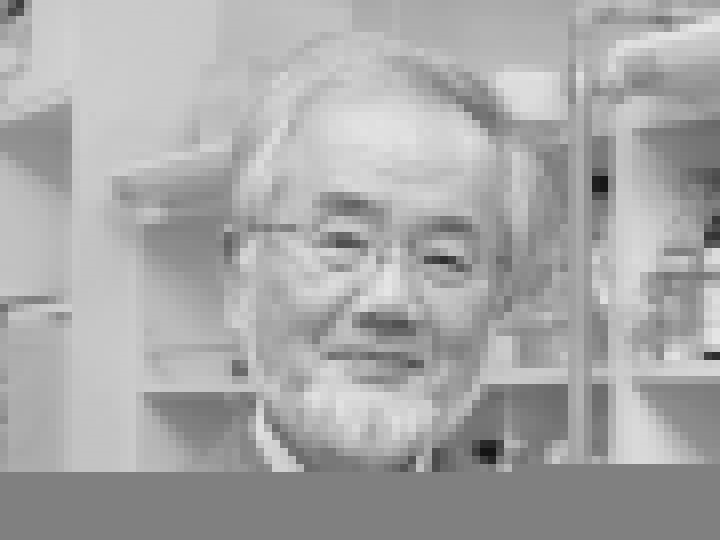Yoshinori Ohsumi

The work:
He was the first person to visually observe the function of autophagy (self-eating), whereby cells clean up the garbage within them by killing invaders and keeping healthy cells. It works as a cell recycling system to maintain homeostasis within the body. He then clarified the mechanism of autophagy and the genes involved.
The impact:
Autophagy is now regarded as a vital cell-recycling system and may aid in future developments to treat neurodegenerative diseases such as Alzheimer’s, cancer and other age- related diseases. Dr. Ohsumi’s research findings have since been applied to autophagy in animals as well, and many researchers are now working to further clarify the molecular mechanism and physiological significance of this process.
Bio
Dr. Yoshinori Ohsumi was born in Fukuoka in 1945. In 1963, he entered to The Univ. of Tokyo, then he chose decisively to follow molecular biology as the path of his future. As a graduate student, Dr. Ohsumi studied the initiation mechanism of E. coli ribosome and then action of colicin E3, which inhibits the translation of E. coli cells by binding to its receptor. Near the end of 1974, he enrolled in Rockefeller Univ., to study under Dr. G. M. Edelman. First Dr. Ohsumi worked on in vitro fertilization in mice, then switched to work on the mechanism of initiation of DNA replication using yeast, which introduced him to yeast research. Dr. Ohsumi returned to Japan at the end of 1977, and worked as an assistant professor under Prof. Y. Anraku, at the Faculty of Science, The Univ. of Tokyo. Dr. Ohsumi decided to take up the study of the yeast vacuolar membrane. By making pure vacuolar membrane vesicles, he succeeded to show various active transport systems and a novel type of proton-pump, v-type ATPase on the vacuolar membrane.
In 1988, Dr. Ohsumi became an associate professor in College of Arts and Sciences of The Univ. of Tokyo and opened up his own small lab. He decided to work on the lytic function of the vacuole. Soon after, Dr. Ohsumi found yeast autophagy by light and electron microscopy. Taking advantage of yeast system, he performed a genetic screen for autophagy-defective mutants. His group could get 15 genes essential for starvation-induced autophagy by the first screen, and started cloning of these ATG genes. Then Dr. Ohsumi moved to The National Inst. for Basic Biology at Okazaki, and uncovered that these Atg proteins consist of six unique functional groups, such as a protein kinase complex, two ubiquitin-like conjugation systems, a PtdIns 3-kinase complex and so on. Drs. T. Yoshimori and N. Mizushima in his lab started studies on ATG genes in mammals and a student also worked on plant, proving that the ATG system is well conserved in higher eukaryotes. However, up to now, Dr. Ohsumi has focused on dissection of the molecular mechanism of the Atg proteins in yeast. In 2009, Dr. Ohsumi moved to Tokyo Inst. of Technology, and continues to elucidate the molecular details of membrane dynamics during autophagosome formation and the physiological relevance of autophagy by combination of cell biology, biochemistry, molecular biology, and structural biology.

